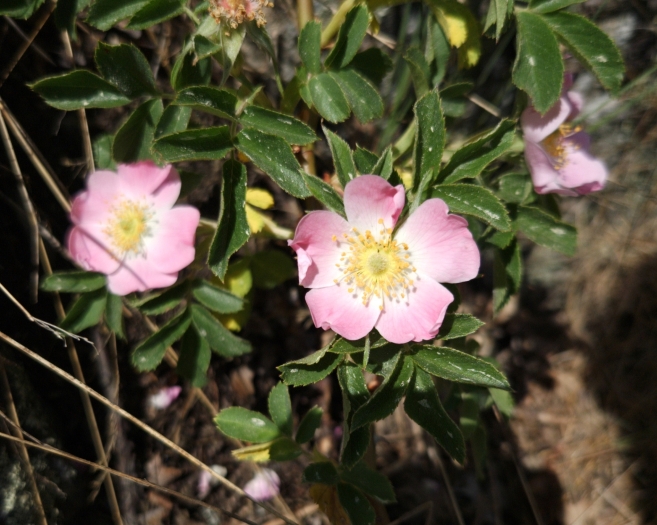Glaucous Dog Rose
(Rosa dumalis)
Glaucous Dog Rose (Rosa dumalis)
/
/

© ZWG
CC BY 4.0
Image By:
© ZWG
Recorded By:
Copyright:
CC BY 4.0
Copyright Notice:
Photo by: © ZWG | License Type: CC BY 4.0 | License URL: http://creativecommons.org/licenses/by/4.0/ | Uploader: zwg | Publisher: iNaturalist |

























Estimated Native Range
Summary
Rosa dumalis, commonly known as Glaucous Dog Rose, is a deciduous shrub native to a variety of habitats including open woodlands, scrublands, and forest edges across Europe, the Caucasus, and northern Africa. It typically grows to a height of 3 to 6 feet and is known for its arching stems and bluish-green foliage. The plant boasts fragrant flowers that are usually dark or light pink, appearing in June and July, and are moderately showy. Following the flowering season, it produces oval red hips that are rich in vitamin C and persist into the autumn, providing visual interest and a food source for wildlife.
Glaucous Dog Rose is valued for its hardiness and ease of maintenance, making it suitable for naturalistic plantings and wildlife gardens. It can be used for hedging, as a specimen shrub, or integrated into mixed borders. This rose prefers full sun to part shade and thrives in well-drained soils, though it is tolerant of various soil types. While it is not particularly drought-tolerant, it does not require excessive watering once established. Gardeners should be aware that Rosa dumalis can spread by suckers, potentially becoming invasive outside its native range. It is also susceptible to common rose diseases such as black spot and powdery mildew.CC BY-SA 4.0
Glaucous Dog Rose is valued for its hardiness and ease of maintenance, making it suitable for naturalistic plantings and wildlife gardens. It can be used for hedging, as a specimen shrub, or integrated into mixed borders. This rose prefers full sun to part shade and thrives in well-drained soils, though it is tolerant of various soil types. While it is not particularly drought-tolerant, it does not require excessive watering once established. Gardeners should be aware that Rosa dumalis can spread by suckers, potentially becoming invasive outside its native range. It is also susceptible to common rose diseases such as black spot and powdery mildew.CC BY-SA 4.0
Plant Description
- Plant Type: Shrub
- Height: 4-6 feet
- Width: 4-6 feet
- Growth Rate: Moderate
- Flower Color: Pink
- Flowering Season: Summer, Fall
- Leaf Retention: Deciduous
Growth Requirements
- Sun: Full Sun
- Water: Medium
- Drainage: Medium
Common Uses
Bird Garden, Butterfly Garden, Low Maintenance, Showy Flowers
Natural Habitat
native to a variety of habitats including open woodlands, scrublands, and forest edges across Europe, the Caucasus, and northern Africa
Other Names
Common Names: Glaucous Dog Rose, Rosehip, Rose-bush
Scientific Names: , Rosa dumalis, ? aciphylloides, Rosa aciphylloides, Rosa afzeliana f. aciculosa, Rosa afzeliana f. aciphylloides, Rosa afzeliana f. adenocalyx, Rosa afzeliana f. aspera, Rosa afzeliana f. bernardii, Rosa afzeliana f. binnensis
GBIF Accepted Name: